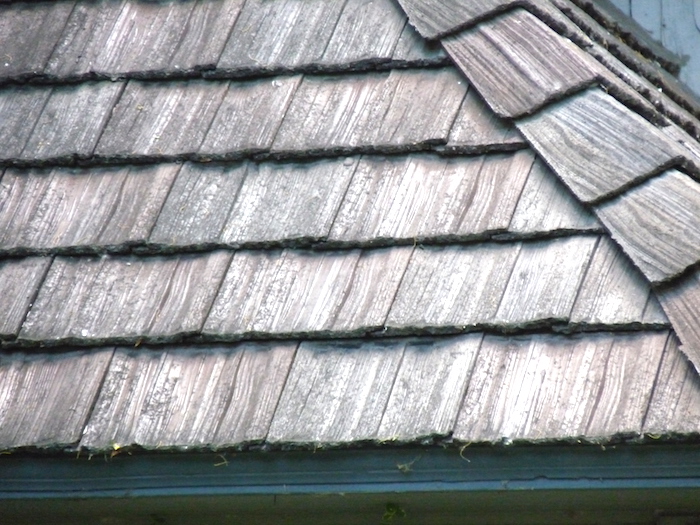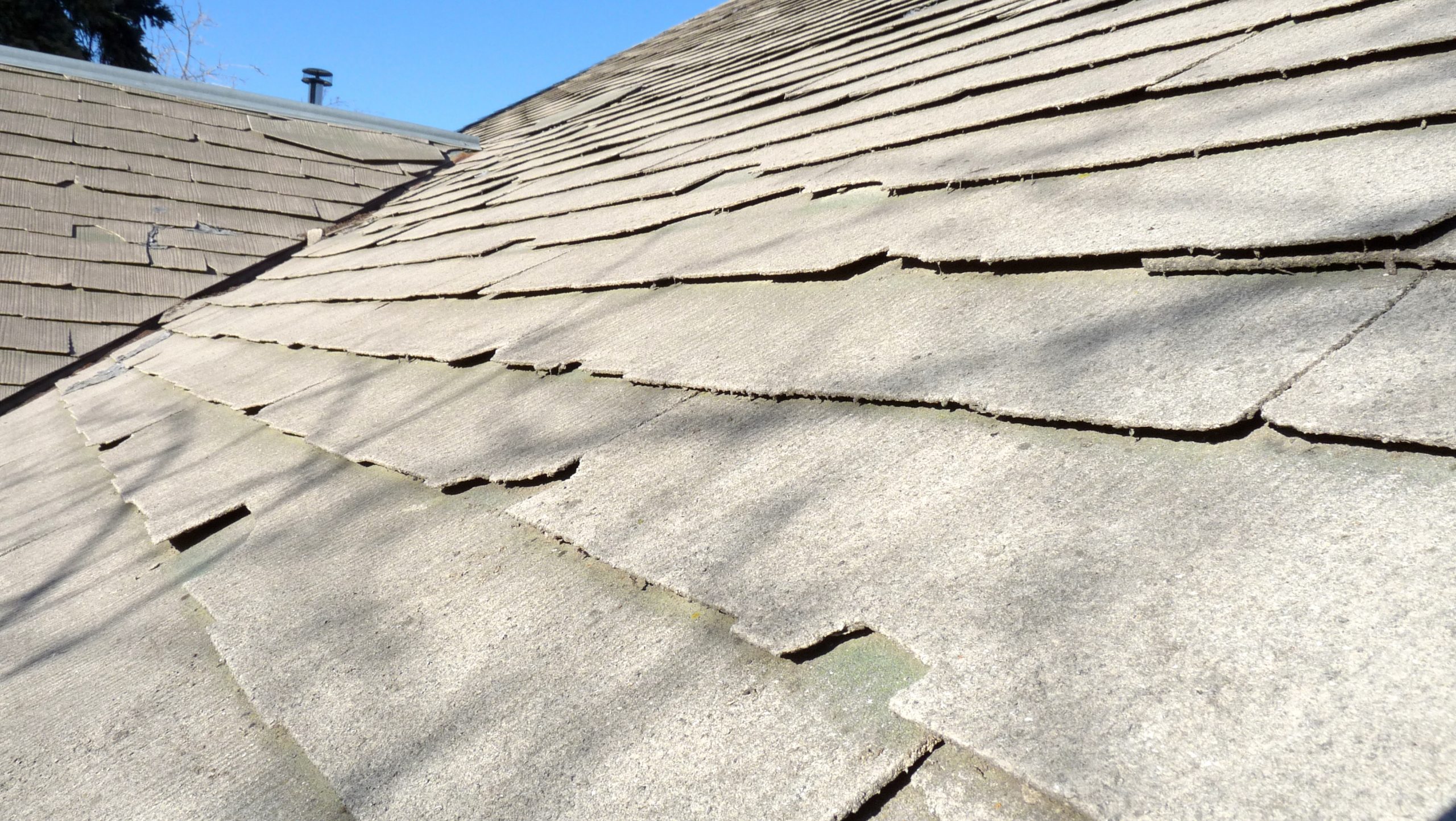

For many years, fiber-cement roofing materials were manufactured with an asbestos content in the 5% to 35% range. The only way to determine actual asbestos content is through laboratory testing. The best term for identifying these shingles is "fiber-cement with a high likelihood of some percentage of asbestos content".
You may hear older materials referred to as Transite, which is a Johns-Manville trade name originating in the late 1920s, but roofing products containing asbestos were also manufactured by CertainTeed, GAF, and others. Chrysotile is a type of asbestos commonly used in roofing products. Once a roofing material is positively identified as containing asbestos, your client will probably be required by disclosure laws to make potential buyers aware of its presence.
Qualified roofing contractors should be aware of the dangers connected with its removal when the roof must be replaced. Fiber-cement shingles manufactured after asbestos was prohibited contained cellulose materials as substitutes and due to non-compatible expansion and contraction rates between cement and cellulose, these roofing materials deteriorated relatively quickly.
Modern Transite roofing materials are manufactured using crystalline silica which has been classified by the International Agency for Research on Cancer (IARC) as being carcinogenic to humans. Fiber-cement materials containing asbestos have been used in the production of shingles, corrugated roofing, underlayment, roof sheathing, and many other products.
Asbestos becomes a health hazard when it is friable, meaning in a condition in which fibers become airborne and may be inhaled. As roof products age and deteriorate, they may release fibers into the air. Fiber-cement roofing materials are often- but not always- grey.
Fiber-cement roofing included various percentages of asbestos until the early 1980s. For a while, asbestos was banned in many products and manufacturers tried substituting other products, including cellulose, which didn't work out well.
Tiles with 50-year warranties failed quickly and lawsuits reduced the number of manufacturers producing fiber-cement roofing.
In reports, when encountering old fiber-cement roofing, inspectors SHOULD NOT refer to it as asbestos roofing. The same is true for siding. Both products had varying amounts of asbestos, depending on manufacturer.
Do not walk fiber-cement roofing.
